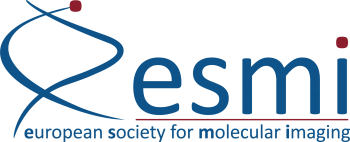Towards a Hyper-MRI Consensus Paper
Open Call for Contributors/Authors
The Hyperpolarised MRI field has developed rapidly, with an ever-growing number of groups joining the community. As this expansion continues, we – the ESMI Hyperpolarised MRI Study Group – would like to take action towards a community-driven consensus guideline. We invite all researchers working in the field to actively contribute to this collaborative effort.
THE AIM
To promote good practices, improve reproducibility, and provide newcomers with reliable protocols so that HP-MRI studies across the community produce robust and meaningful results.
THE PROCEDURE
Step 1 Mapping/Review Phase
Our first objective is to assemble a comprehensive overview of current methodologies used in animal and cellular HP-MRSI studies. This mapping exercise will document the diversity of approaches across laboratories, highlight shared practices, identify technical bottlenecks, and pinpoint opportunities for harmonisation. This phase will lead to a community-authored literature review paper, which will serve as the foundation for a future consensus guideline.
SCHEDULE
The intensive manuscript-drafting period will run January–March 2026, supported by biweekly small-group writing meetings.
Tentative coordination meetings:
- 17 December 2025, 16:00 UTC – Orientation meeting
- 11 March 2026, 16:00 UTC – Review of preliminary results
- 24 March 2026 (EMIM 2026) – In-person Study Group Meeting & presentation of preliminary results
- 10 June 2026, 16:00 UTC – Final review meeting
APPLICATION / INTEREST
If you are interested in actively contributing, complete this short form by 5 December – please consider the schedule and author expectations*:
Create your own user feedback surveyStudy Group Scope, Relevance, and Objectives
Spin hyperpolarization has emerged as a versatile approach for non-invasive characterization of cellular, molecular, and metabolic processes using magnetic resonance imaging (MRI) and spectroscopy (MRS). By transiently increasing nuclear spin polarization by several orders of magnitude, hyperpolarized MR enables real-time assessment of biochemical pathways, tissue physiology, and gas exchange that cannot be measured with conventional MR techniques.
Several hyperpolarization platforms are now advancing toward clinical translation. Spin-exchange optical pumping (SEOP) has matured into a clinically approved method for producing hyperpolarized ¹²⁹Xe, which is already cleared by the US FDA for lung MRI and ventilation imaging. SEOP-polarized xenon additionally enables dissolved-phase imaging and has potential applications in neuroimaging and cardiopulmonary medicine. Dissolution dynamic nuclear polarization (dDNP) is progressing rapidly toward clinical adoption as well; hyperpolarized ¹³C-labeled metabolic probes are now supported by a growing number of first-in-human studies, with multi-site Phase 1/2 trials underway in Europe and North America. Parahydrogen-based approaches continue to expand the range of hyperpolarizable substrates and offer complementary opportunities for rapid and cost-effective metabolic imaging.
These technological advances have broadened the applications of hyperpolarized MR across oncology, cardiology, pulmonary imaging, and metabolic research, spanning basic mechanistic studies through to large-animal and early-phase clinical work. The field is entering a phase where coordinated development, standardization, and shared research infrastructure can accelerate translation and expand clinical impact.
Objectives:
- To promote coordinated and complementary development of hyperpolarization technologies—including SEOP, dDNP, and parahydrogen-based methods—within a collaborative European framework.
- To disseminate advances in hyperpolarized MR methods and applications to the wider molecular imaging, clinical, and biomedical research communities.
- To support cooperative strategies, shared resources, and joint initiatives across the European Hyperpolarization Community to strengthen translational pathways and ensure alignment with emerging clinical needs.
- To promote coordinated and complementary development of hyperpolarization technologies—including SEOP, dDNP, and parahydrogen-based methods—within a collaborative European framework.
- To disseminate advances in hyperpolarized MR methods and applications to the wider molecular imaging, clinical, and biomedical research communities.
- To support cooperative strategies, shared resources, and joint initiatives across the European Hyperpolarization Community to strengthen translational pathways and ensure alignment with emerging clinical needs.
Interested in joining the closed LinkedIn Group
Case 1: you are already registered at LinkedIn
Just follow this link to the group page https://www.linkedin.com/groups/8889343/ and tick the blue “Request to join” button. Once the chairs have accepted your request, you are part of the group.
Case 2: you are not registered at LinkedIn
Create an account/profile at www.linkedin.com
Then follow this link to the group page https://www.linkedin.com/groups/8889343/ and tick the “Request to join” button. Once the chairs have accepted your request, you are part of the group.
Group Review Article (2018)
Metabolic and Molecular Imaging with Hyperpolarised Tracers
Skinner, J.G., Menichetti, L., Flori, A., Dost, A., Schmidt, A.B., Plaumann, M., Gallagher, F.A., Hövener, J.-B.
Founding Members
- Silvio Aime – Torino
- Kevin Brindle – Cambridge
- Jan-Bernd Hövener – Kiel
- Luca Menichetti – Pisa
- Markus Plaumann – Magdeburg
- Francesca Reineri – Torino
Group Leadership
- Chair: Christoffer Laustsen, Aarhus
- Co-Chair: Irene Marco-Rius, Barcelona
Trainee: Anais Choffart, Tübingen
Interested in joining a Study Group?
You are an ESMI member already? Just log-in to your ESMI member portal, proceed to “Profile” and sign-in to any Study Group you are interested in.
Not a member yet?
Proceed to the Member Portal and register – it is just 85€/year, 20€/year for PhD students.
